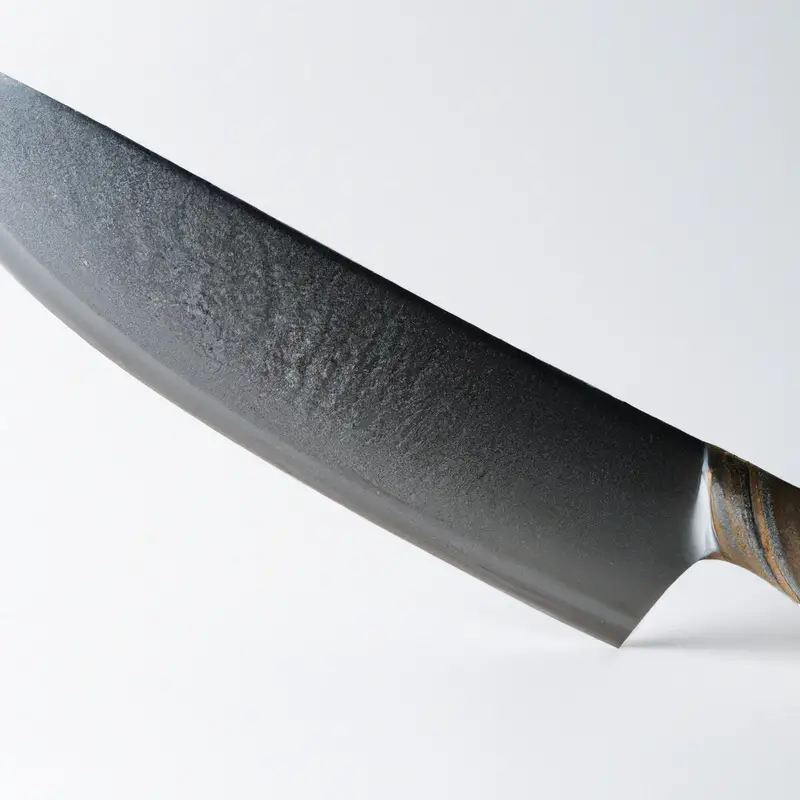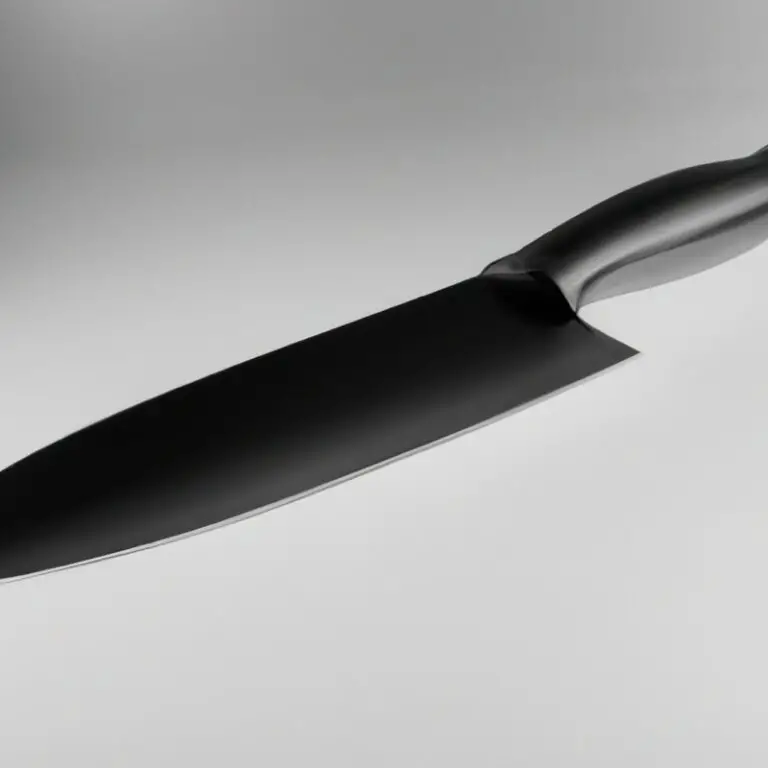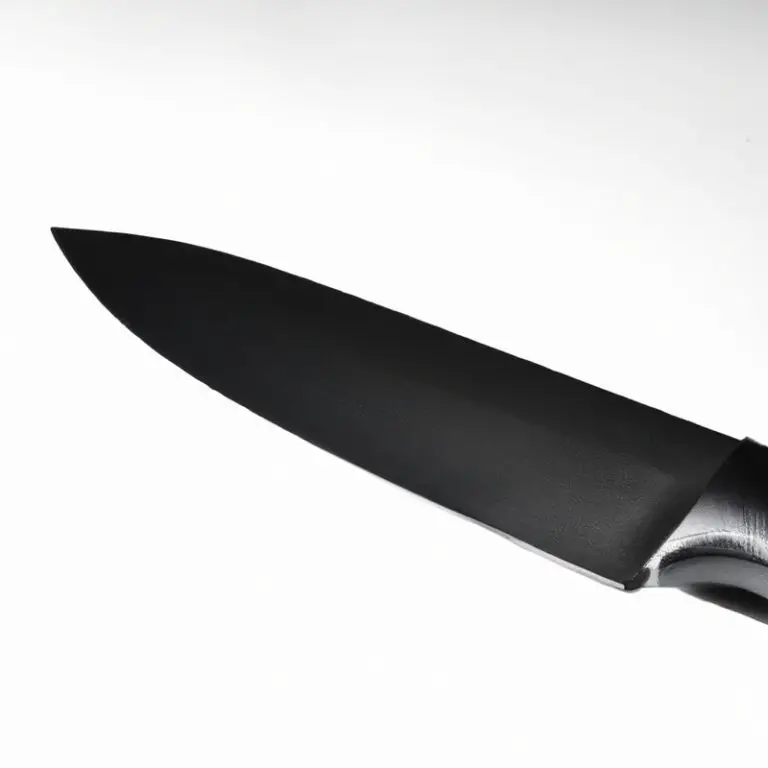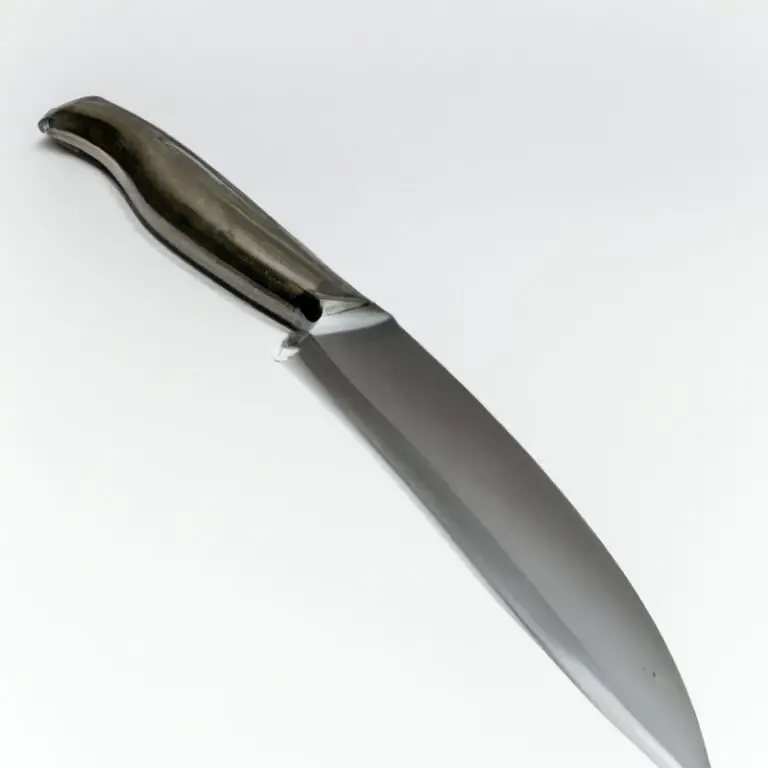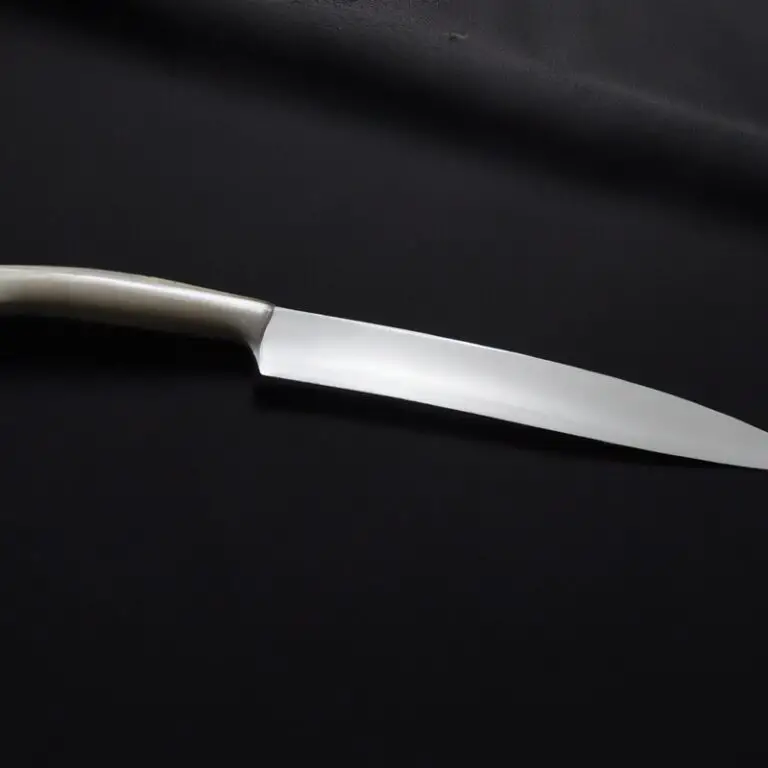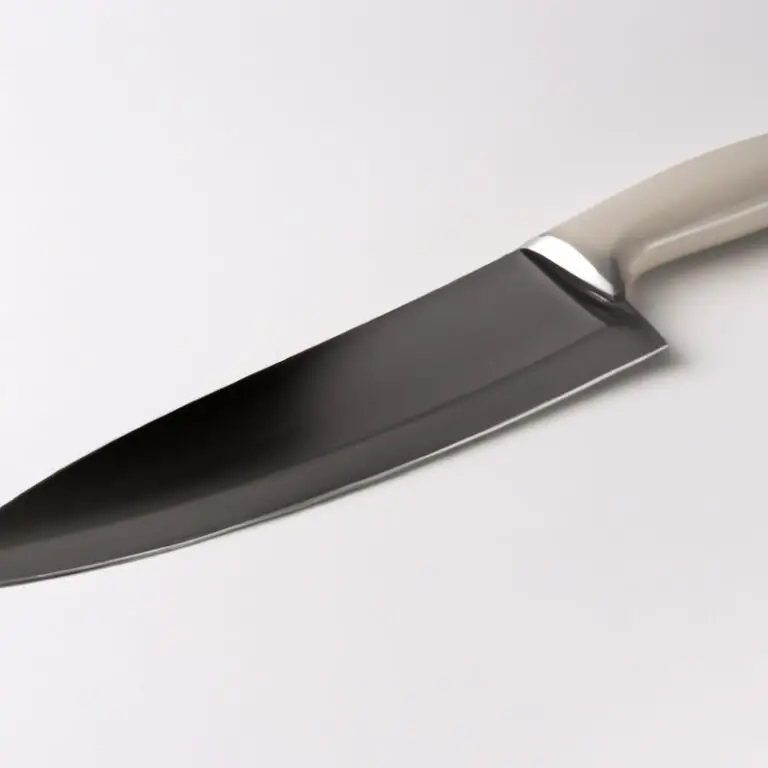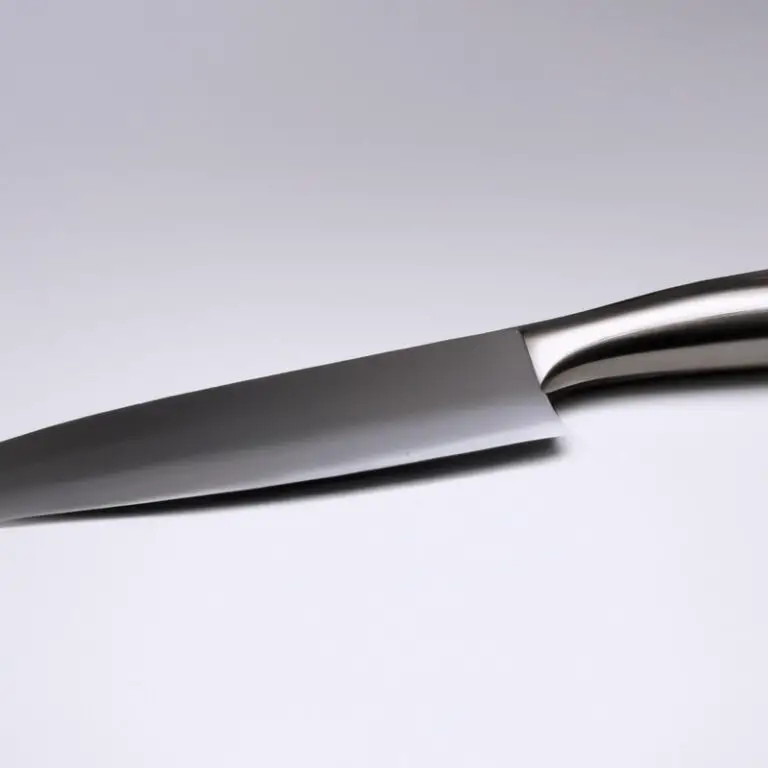How To Cut Through Root Vegetables With a Santoku Knife? Slice Like a Pro
Key Takeaways:
- Use a Santoku knife to easily cut through tough root vegetables like carrots and potatoes.
- Maintain a sharp blade and use a rocking motion to prevent the knife from sticking to the vegetables.
- Practice proper grip and finger placement to ensure precision and safety while cutting.
- Experiment with different cutting styles and techniques to find what works best for you.
Do you struggle with chopping tough root vegetables? Are you tired of using dull, ineffective knives?
Look no further than the Santoku knife.
This versatile Japanese knife is perfect for slicing through dense roots like carrots, parsnips, and potatoes with ease. In this article, I will share expert tips on selecting the right Santoku knife, proper handling techniques, and maintaining the sharp edge of your blade.
Plus, we’ll explore different cutting styles and precautions to ensure you chop safely and efficiently.
Say goodbye to rough cuts and hello to perfectly diced veggies with a Santoku knife!
| Step | Description |
|---|---|
| Step 1 | Place the root vegetable on a stable cutting board and use a vegetable brush to clean it under running water. |
| Step 2 | Hold the Santoku knife with your dominant hand and grip the vegetable with the other hand by placing your fingers on top of it and your thumb on the side. |
| Step 3 | Use the tip of the Santoku knife to make a shallow cut on one side of the root vegetable, about ¼ inch deep. |
| Step 4 | Hold the handle of the Santoku knife firmly and use a sawing motion to cut through the vegetable, using the shallow cut as a guide. |
| Step 5 | Repeat the sawing motion on the other side of the root vegetable, and continue until it is completely cut through. |
| Step 6 | Repeat the process with any remaining root vegetables. |
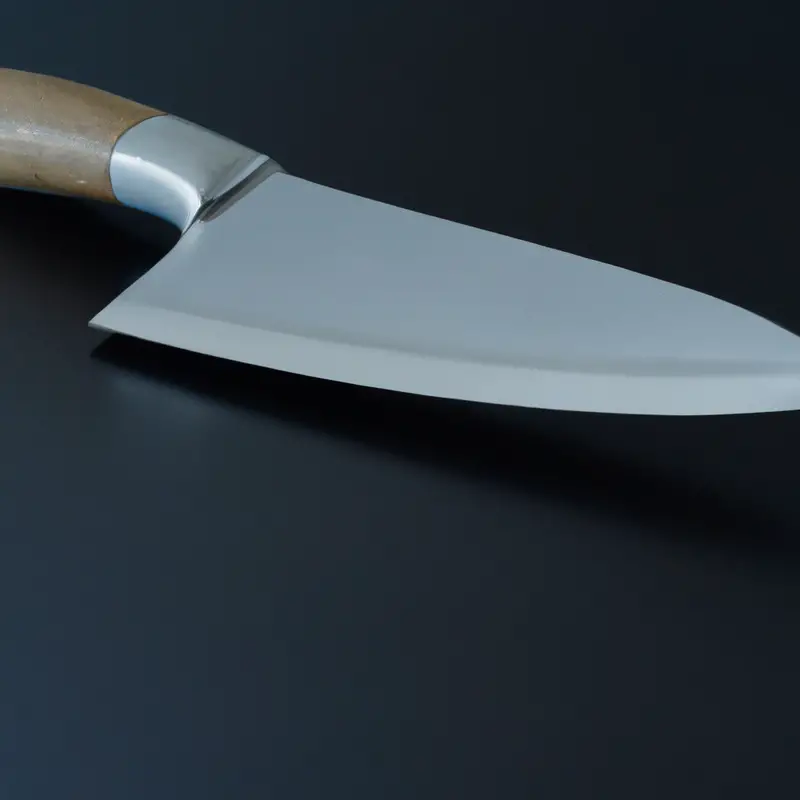
Understanding the Santoku Knife: A Guide to its Features and Benefits for Cutting Root Vegetables
Understanding the Santoku Knife: A Guide to its Features and Benefits for Cutting Root Vegetables: The Santoku knife is a popular Japanese knife that combines the features of a Western chef’s knife and a Japanese vegetable knife. It has a shorter and wider blade, a straighter edge, and a rounded tip compared to a typical chef’s knife.
These features make it ideal for chopping, dicing, and slicing vegetables, including root vegetables.
The main benefits of using a Santoku knife for cutting root vegetables are its versatility, efficiency, and precision. The Santoku knife’s wider blade and straight edge provide stability and control, allowing you to cut through tough root vegetables with ease.
Its comfortable handle design and lightweight construction reduce fatigue, making it ideal for prolonged use.
When choosing a Santoku knife for cutting root vegetables, look for a high-quality blade made of stainless steel or carbon steel. These materials hold a sharper edge and are more durable than other materials.
Make sure to maintain the blade by honing and sharpening it regularly to ensure optimal performance.
To use a Santoku knife for cutting root vegetables, start by selecting the appropriate cutting technique based on the type of vegetable. For example, use a chopping motion for large vegetables like sweet potatoes and a slicing motion for thinner vegetables like carrots.
Always use a cutting board and keep your fingers and other body parts away from the blade to avoid injury.
In summary, the Santoku knife is a versatile and efficient tool for cutting root vegetables. Its wider blade and straight edge offer stability and control, making it a popular choice among chefs and home cooks alike.
When selecting a Santoku knife, choose a high-quality blade and maintain it properly.
Practice proper cutting techniques and safety precautions for optimal results.
Perfecting Your Knife Skills: Proper Handling Techniques for Using a Santoku Knife on Root Vegetables
When it comes to using a Santoku knife on root vegetables, proper handling techniques are crucial for achieving precision and safety. Here are some tips to perfect your knife skills:
- Grip the handle firmly with your dominant hand and rest your index finger on the spine of the blade for stability.
- Use a cutting board made of a durable material, such as bamboo or hardwood, to prevent slipping and ensure stability.
- Position the root vegetable on the cutting board with the flat side down and hold it with your non-dominant hand.
- Keep the blade perpendicular to the vegetable and use a forward and backward sawing motion to slice through it with a gentle pressure.
- For dicing or chopping, make perpendicular cuts into the vegetable and then slice through it horizontally, using a rocking motion to create even pieces.
- Always use a sharp knife to prevent slippage and maintain control over the blade.
By following these handling techniques, you can improve your knife skills and safely cut through a variety of root vegetables with a Santoku knife.
The Importance of Sharpness: Maintaining the Blade of Your Santoku Knife for Optimal Cutting of Root Vegetables
Maintaining the sharpness of your Santoku knife is crucial for optimal cutting of root vegetables. A dull blade will not only make the job harder, but it can also cause injuries due to the extra force needed to cut through tough roots.
Additionally, a dull blade can damage the texture and flavor of the vegetables.
To maintain the sharpness of your Santoku knife, always use a honing steel before and after each use. It is also recommended to sharpen your knife using a whetstone every three to six months depending on usage.
It’s essential to store your Santoku knife properly.
Avoid leaving it in a drawer with other utensils as this can cause it to become dull quickly. Instead, invest in a knife block or magnetic strip to keep the blade protected and sharp.
Lastly, remember to always use a cutting board made of a material that won’t dull the knife’s edge, such as bamboo or plastic.
Hard surfaces such as stone or glass can damage the blade, leading to dullness. By following these maintenance tips, you’ll keep your Santoku knife sharp and ready to tackle any root vegetable with ease.
Root Vegetables 101: A Comprehensive Guide to Cutting Techniques Using a Santoku Knife
Root vegetables come in various shapes and sizes, and cutting them can be a challenging task. However, using a Santoku knife can make the task easier and more efficient.
Here are some cutting techniques to master:
- Halving: Cut the root vegetable lengthwise into two equal parts.
- Slicing: Cut the root vegetable into slices of uniform thickness.
- Dicing: Cut the root vegetable into cubes of equal size.
- Chopping: Cut the root vegetable into small irregular pieces.
- Mincing: Cut the root vegetable into very fine pieces.
When using a Santoku knife to cut root vegetables, it’s important to use a chopping board to avoid any damage to your kitchen surface or the blade of the knife. Once you’ve chosen the desired cutting technique, place the root vegetable on the chopping board and use a steady downward motion with the Santoku knife to cut through it.
Remember to keep your fingers clear of the blade and to hold the root vegetable firmly in place.
With these techniques, you’ll be able to cut root vegetables efficiently and effectively using a Santoku knife.
Reliability and Durability: Choosing the Best Santoku Knife for Slicing Through Root Vegetables
When it comes to choosing the best Santoku knife for slicing through root vegetables, reliability and durability are key factors to consider. Look for a knife with a full-tang construction, meaning the blade extends into the handle for added strength.
A high-carbon stainless steel blade is also recommended for its resistance to corrosion and ability to hold a sharp edge.
In terms of durability, a hardwood handle with a comfortable grip will provide longevity and stability during use. Additionally, a knife with a Rockwell hardness rating of at least 55 will ensure that the blade remains strong and durable even after repeated use on tough vegetables.
When selecting a Santoku knife for slicing through root vegetables, it’s important to prioritize performance over aesthetic appeal.
Look for a knife with a sturdy construction, sharp blade, and comfortable handle for optimal durability and reliability.
Navigating Tough Roots: Tips and Tricks for Slicing Hard and Fibrous Vegetables with a Santoku Knife
Navigating tough roots can be a challenge, but with the right technique and tools, you can easily slice through hard and fibrous vegetables with a Santoku knife. Here are some tips and tricks for cutting through root vegetables with ease:
- Use a sharp Santoku knife: A dull knife can make the task of cutting through tough roots even more challenging. Ensure that your knife is sharp before starting.
- Cut the vegetable into manageable pieces: If the root vegetable is too large, cut it into smaller pieces before slicing.
- Use a rocking motion: Place the Santoku knife on the vegetable, and gently rock it back and forth to create a sawing motion instead of a straight cutting one.
- Use the point of the knife for precision: The pointed tip of a Santoku knife offers better precision when trying to penetrate a tough root.
- Apply consistent pressure: Use a steady and consistent amount of pressure to slice through the vegetable.
- Slice slowly: Take your time when slicing through a tough root to avoid losing control of the knife.
By following these tips and tricks, you will be able to slice through tough roots with your Santoku knife like a pro.
Dicing, Chopping, and Mincing: The Versatility of a Santoku Knife for Preparing Different Root Vegetables
The Santoku knife is a versatile tool that can be used for dicing, chopping, and mincing a range of root vegetables. Its wide blade makes it perfect for cutting through tough vegetables like carrots and parsnips.
The flat edge is also great for making uniform slices and the gentle curve allows for a smooth rocking motion when chopping.
For dicing, start by cutting the root vegetable into thin slices and then stack them on top of each other before making crosswise cuts. This will produce evenly sized cubes.
For chopping, use a rocking motion with the blade while using your non-dominant hand to hold the vegetable steady.
Mincing is achieved by first making thin slices in the vegetable, then turning them 90 degrees and dicing them into very small pieces. This technique creates finely minced vegetables that are perfect for soups, stews, and sauces.
Remember to always keep your fingers safely tucked away from the blade and to use a cutting board with a non-slip surface when using a Santoku knife.
With its versatility and precision, a Santoku knife is an essential tool for any home cook looking to prepare a range of delicious root vegetable dishes.
Safety First: Precautions to Take When Using a Santoku Knife for Cutting Root Vegetables
When using a Santoku knife to cut root vegetables, safety should always be a top priority. Here are some precautions to take:
- Use a cutting board: Never cut root vegetables on a bare countertop or other surfaces that may dull or damage the blade. Always use a cutting board.
- Keep your fingers away from the blade: While holding the root vegetable, keep your fingers tucked away from the knife blade at all times. Use a claw-grip technique, where your fingertips are curled under and your knuckles guide and protect your fingers.
- Make sure the knife is sharp: A dull blade is more likely to slip and cause an injury. Keep your Santoku knife sharp, either by using a sharpening stone or a honing steel.
- Cut away from your body: Always cut in a direction that is away from your body, to avoid accidentally cutting yourself.
- Store your knife properly: After use, wash and dry your Santoku knife and store it in a proper place, such as a magnetic holder or a knife block.
By taking these precautions, you can minimize the risk of accidents and injuries while using your Santoku knife for cutting root vegetables.
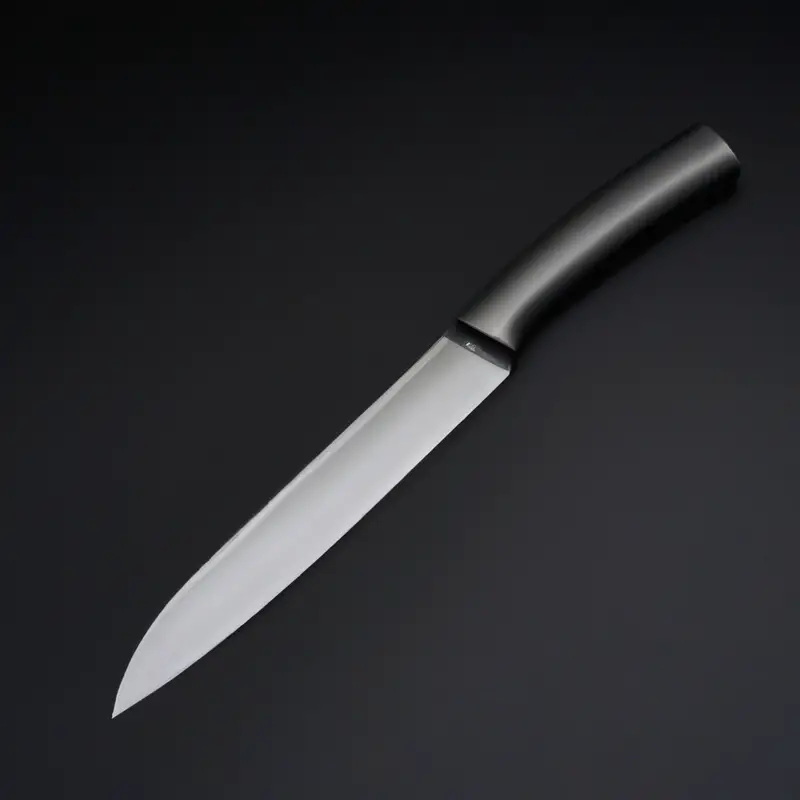
Common Mistakes to Avoid: Pitfalls to Steer Clear of When Using a Santoku Knife on Root Vegetables
When using a Santoku knife on root vegetables, there are some common mistakes to avoid. One common mistake is not using enough pressure when cutting through tougher vegetables like turnips or celery roots.
This can lead to uneven cuts and can also be dangerous if the knife slips.
Another mistake is using a dull blade, which can make it difficult to cut through tougher root vegetables and can also increase the risk of injury. It’s important to avoid sawing back and forth when cutting root vegetables with a Santoku knife, as this can damage the blade and create a less precise cut.
Instead, use a smooth slicing motion, cutting in one direction only.
Be mindful of the size of the vegetable you’re cutting as well. Trying to cut through a large root vegetable all at once can be difficult and dangerous.
It’s better to cut it into smaller, manageable pieces before attempting to slice.
Lastly, always make sure to keep your fingers tucked in and away from the blade when cutting root vegetables with a Santoku knife. It’s easy to accidentally cut yourself if you’re not careful.
By avoiding these common mistakes, you can ensure that you have a safe and successful experience using a Santoku knife to cut through root vegetables.
The Art of Presentation: Cutting Root Vegetables with a Santoku Knife for Maximum Aesthetic Appeal
When it comes to presentation, the way you cut your root vegetables can have a significant impact on the final dish’s aesthetic appeal. Using a Santoku knife to cut your root vegetables can help you achieve a more professional and attractive look.
To start, it’s crucial to select vegetables of the same size and shape for consistent cuts.
Slice through the vegetables smoothly and with a consistent angle to establish a sense of symmetry to your presentation. You can also choose different cutting styles, such as dicing, chopping, or mincing, to achieve different visual effects.
The Santoku knife’s versatility can help you achieve professional and consistent cuts, making your presentation more appealing.
Finally, make sure to clean and wipe the blade between cuts to prevent any sticking or residue that can affect your next slice. With the right techniques and tools, you can elevate the visual appeal of your root vegetable dishes and impress your guests with your attention to detail.
Final Verdict
The Santoku knife is an excellent tool for cutting through root vegetables with precision and efficiency. By mastering proper handling techniques and blade maintenance, you can ensure optimal performance and an extended lifespan for your knife.
Remember to choose a reliable and durable brand that suits your needs, and always prioritize safety when using the Santoku knife.
With these tips and tricks in mind, you’ll be dicing, chopping, and mincing your way to perfectly sliced root vegetables in no time. Trust in your skills and rely on the Santoku knife to elevate your cooking experience to the next level.

